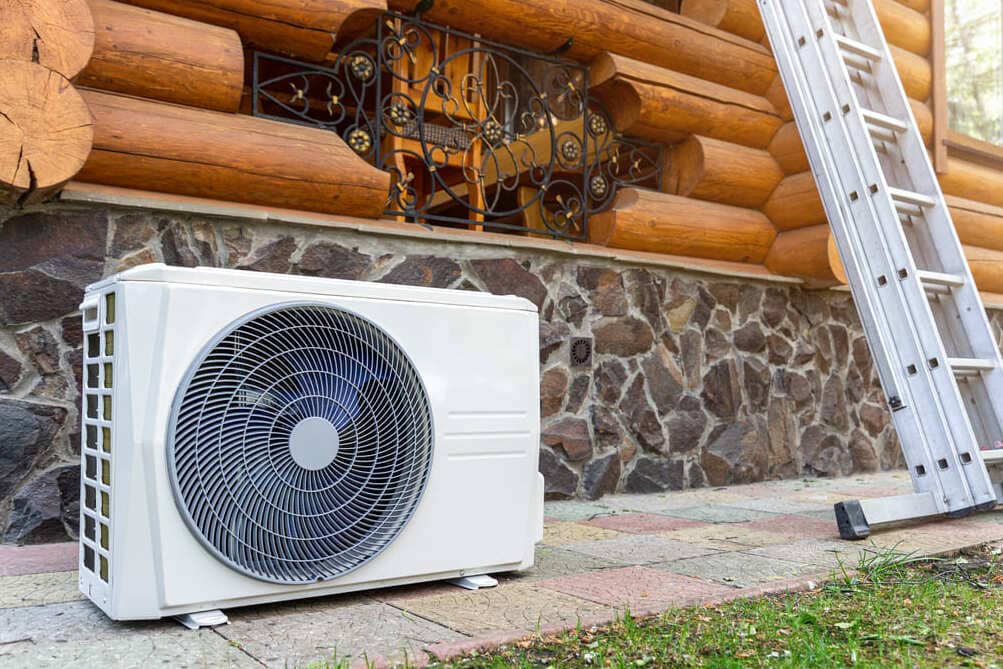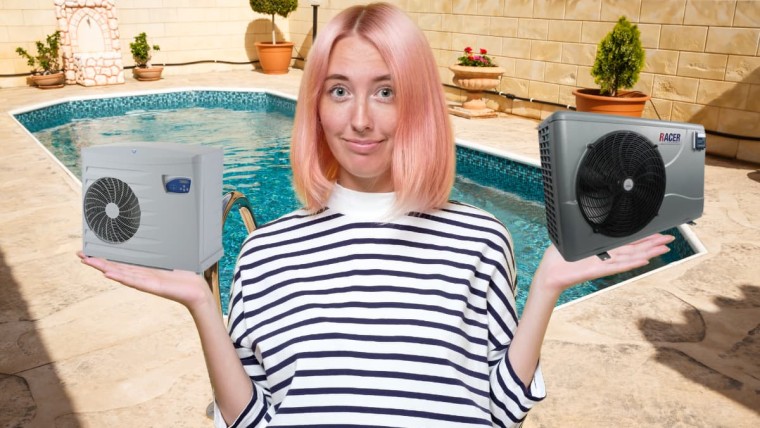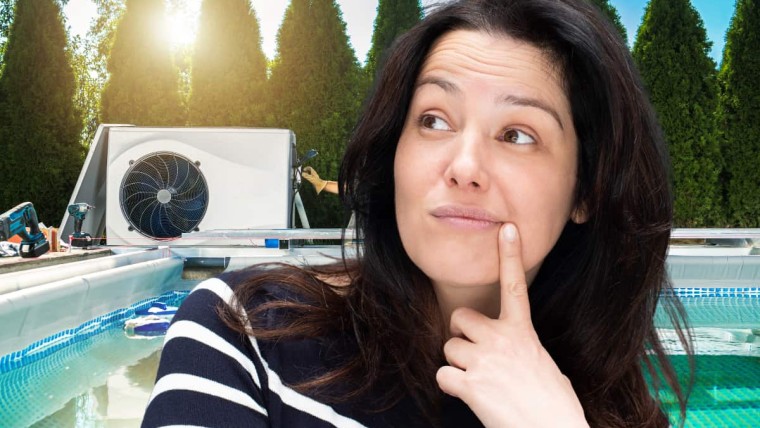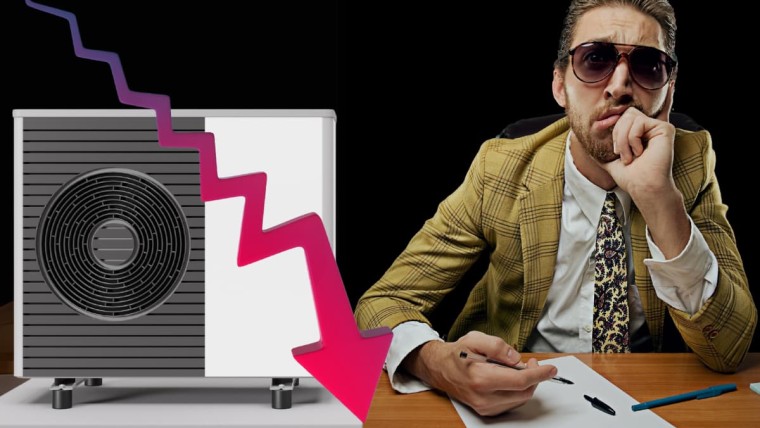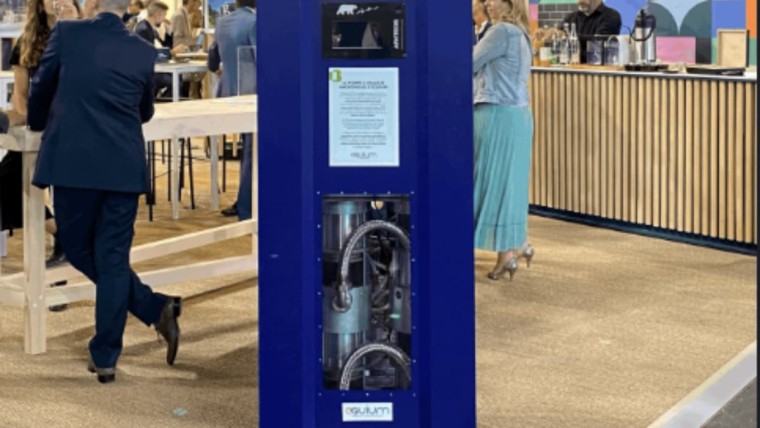These are often referred to as split-system heat pumps and sometimes as single-system heat pumps. Depending on the country, one or the other type of heat pump is more often installed. In France, for example, 90% of installed heat pumps are split systems. In this article, we explain the difference between these two types of heat pumps.
- Monobloc: the entire refrigeration circuit is in the outdoor unit.
- Bibloc: the refrigeration circuit is in two parts, one inside and one outside
NB: you can request a quote for a split or monobloc heat pump, via our network of RGE Qualipac qualified installers, using the form below (valid in France and Belgium)
The Bibloc or Split heat pump
This type of heat pump is the most common in France, but not in Switzerland, except in border regions. The split heat pump is also called split. It is easy to understand the principle. A part of the refrigerating circuit is in the external group. This is the part that will capture the calories in the outside air. It consists mainly of the evaporator, the compressor and the expansion valve.
The external block is then connected to an internal module, also called hydraulic module, by means of refrigeration pipes, in order to close the refrigeration circuit on the condenser. This condenser is the 4th major component of the refrigeration circuit. It can take the form of a plate heat exchanger or a coaxial condenser.
It is he who redistributes the calories captured outside, on the water circuit of the house, and to the domestic hot water tank if it is produced by the heat pump.
The fact that there is a refrigerant connection between the two units, indoor + outdoor, means that refrigerant is constantly circulating between the inside and outside of the house:
- This represents a higher refrigerant charge than for a monobloc model where the circuit is confined to the outdoor unit.
- This increases the potential risk of refrigerant leaks, which depending on the fluid used is harmful to the environment, but which will of course put the entire heat pump installation at risk until the leak is detected and repaired by a refrigeration engineer.
This kind of split installation requires all the know-how of a refrigeration specialist, to make the indoor-outdoor connection in the rules of the art, and then to troubleshoot if an incident occurs. Not every heating engineer has these skills.
The split heat pump does NOT have a better performance than a single unit heat pump, contrary to what you may read in some places. There is no reason why it should have a better power or COP. It's all in the arrangement of the components, just a matter of design and choice.
The split system is restrictive because it limits your choice of professionals.
The monobloc heat pump
With this type of heat pump, the outdoor unit contains all the major components of the refrigeration circuit. That is, the evaporator, the compressor, the expansion valve and the condenser. The heat is then transferred to a water pipe that connects the outdoor unit to the house's technical room.
The refrigerant is confined to the outdoor unit. No refrigerant passes between the interior and exterior of the house.
It will be necessary to install remote pipes buried in the garden, in which will circulate water with a little glycol to avoid freezing in the most extreme conditions of winter climate. Unfortunately, this glycol causes a loss of power, because glycol water does not transmit calories as well as pure water, there is a loss of efficiency in passing.
No certificate of handling fluids is necessary for a heating engineer who would install this kind of device, except for the commissioning of a heat pump that would contain more than 2kg of fluid.
With a monobloc heat pump :
- Installation is simpler and less expensive
- There is also the cost of the remote pipes to transport the water from the inside to the outside. These are not included in the price.
- No need for an indoor module in the house, so potential space saving compared to split models. But unless you are a Wim Hof fan, you will need a hot water tank anyway.
- No need to call a refrigeration specialist for installation or repair, knowing that they remain a rare commodity and that their rates are often higher than those of heating or other sanitary installers.
- The power that can be transmitted from the outdoor unit is limited to the water flow that can pass through the remote pipes. Thus, it will be difficult to increase the power of the system, if one day the need arises, since it will never be possible to make more water pass through the pipes which have a fixed section. With a split system, the parameters of a refrigerant gas can be changed to modulate the power, or even to change the gas, which is simpler.
Advantages and disadvantages of Bibloc vs Monobloc
| Benefits | Disadvantages | |
| PAC Bibloc | – Good power transmission of heating, directly by the refrigerant. – Possibility to go up to higher temperatures of heating water, like a Daikin Altherma 3H HT. – More flexible in terms of power modulationor power evolution, by retrofitting. | – Need for a refrigeration specialist to connect the refrigeration circuit. – Higher fluid load A little more expensive to install - Device a little more expensive – Takes up space inside the home |
| PAC Monobloc | – No need for refrigeration skills to connect individual heat pumps if they have less than 2kg of fluid in their circuit - Device cheaper – Cheaper installation - Installation less space consuming – Less risk of leakage of gas - Gas outside, so it is possible to use it in any security gases ecological but flammable such as propane or R290 and other | – Loss of yield due to the glycol of the water that makes the link between the interior and exterior. - Need to install remote control lines for the transport of water + circulation pump. |
The split heat pump makes sense mainly in the case of a need for high temperature heating water, for example if it is a renovation on old radiators and we keep these radiators. But then the COP will be bad...closer to 2 than to 4. It is also relevant in the case of a house which would evolve in time and which would require more power in the future. It will be easier to adapt the split heat pump to the new conditions.
The PAC Monobloc makes sense if the technical room is small, if the house is not likely to change greatly, if you want to save money on installation and equipment, or if you do not want to depend on specialized skills of refrigeration specialists sometimes difficult to find. Finally, it reassures by confining the refrigerant gas to the outside of the house, reducing the risk of a serious fire due to a flammable gas such as R32 or R290.
The future in Bibloc or Monobloc?
Today in France, as mentioned above, the majority of air-to-water heat pumps are split models. And you only have to look at the EDF website, which is obliged to promote renewable energies because of the CEE, to realize that they are clearly pushing towards split models.
In Switzerland, the trend is not as pronounced, firstly because manufacturers are not pushing for split systems but rather for monobloc systems, and secondly because refrigeration specialists are not as present as in France, if not trained in large enough numbers. However, sanitary fitters are very present throughout Switzerland and install heat pumps that they can control and connect without any specific knowledge, i.e. monobloc models.
The future will be marked by changes in refrigerants, since R410A is already disappearing, to be replaced by R32 with a GWP (Global Warming Potential) 3 times lower (around 700). R32 will soon be replaced by propane or R290.. However, this fluid is slightly flammable. On the other hand, some manufacturers such as Vaillant and Alpha-Innotec are already looking further ahead and using a gas that is even less damaging to the ozone layer, with a ridiculously low GWP of 3, namely propane or R290. However, this gas is much more flammable. The trend is therefore in the direction of safety, and we can imagine that more and more manufacturers will offer monobloc models and push towards these solutions for safety reasons with R290 gas. Indoor-outdoor connections would then be made with water, rather than with this kind of environmentally-friendly but flammable gas.
Also read to increase your heat pump culture:
Daikin split heat pump reviews
Opinions on a NIBE packaged heat pump

Julien G.
Juliena mechanical engineering graduate and specialist in climate engineering since 2009, has become a writer specializing in renewable energies, with expertise in heat pumps and photovoltaic solar panels for individual housing.
See all articles by this author
